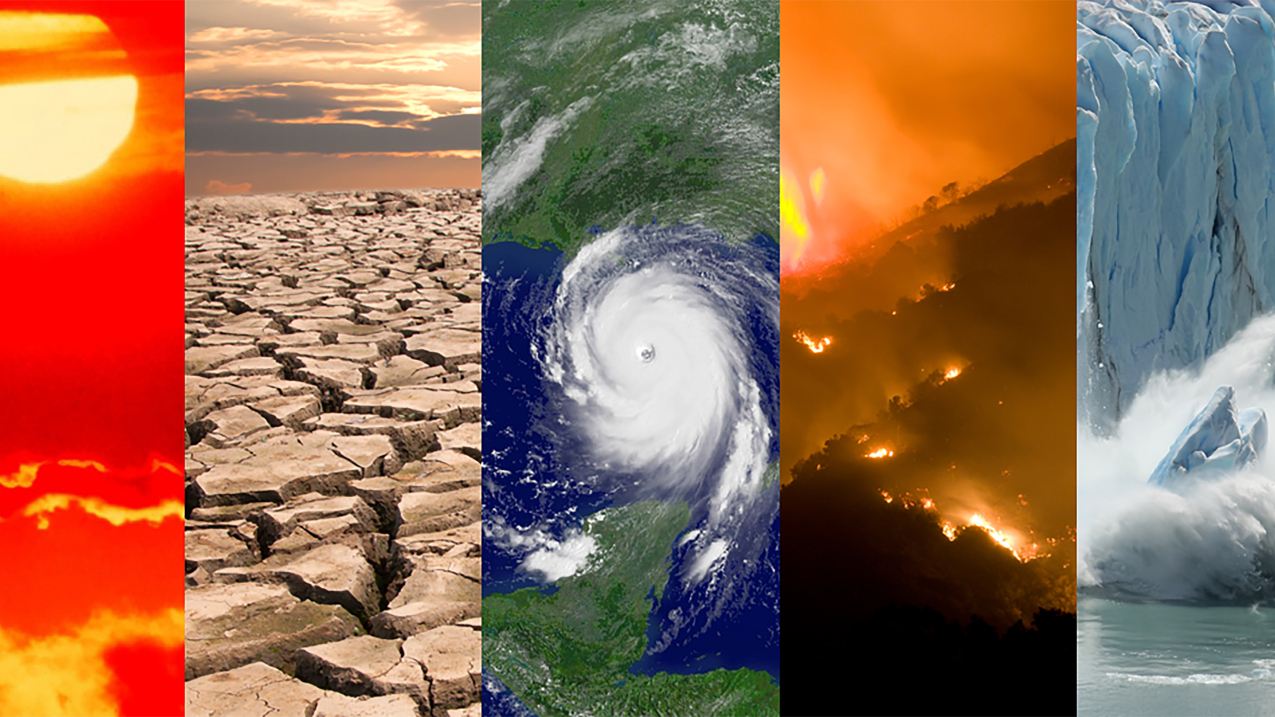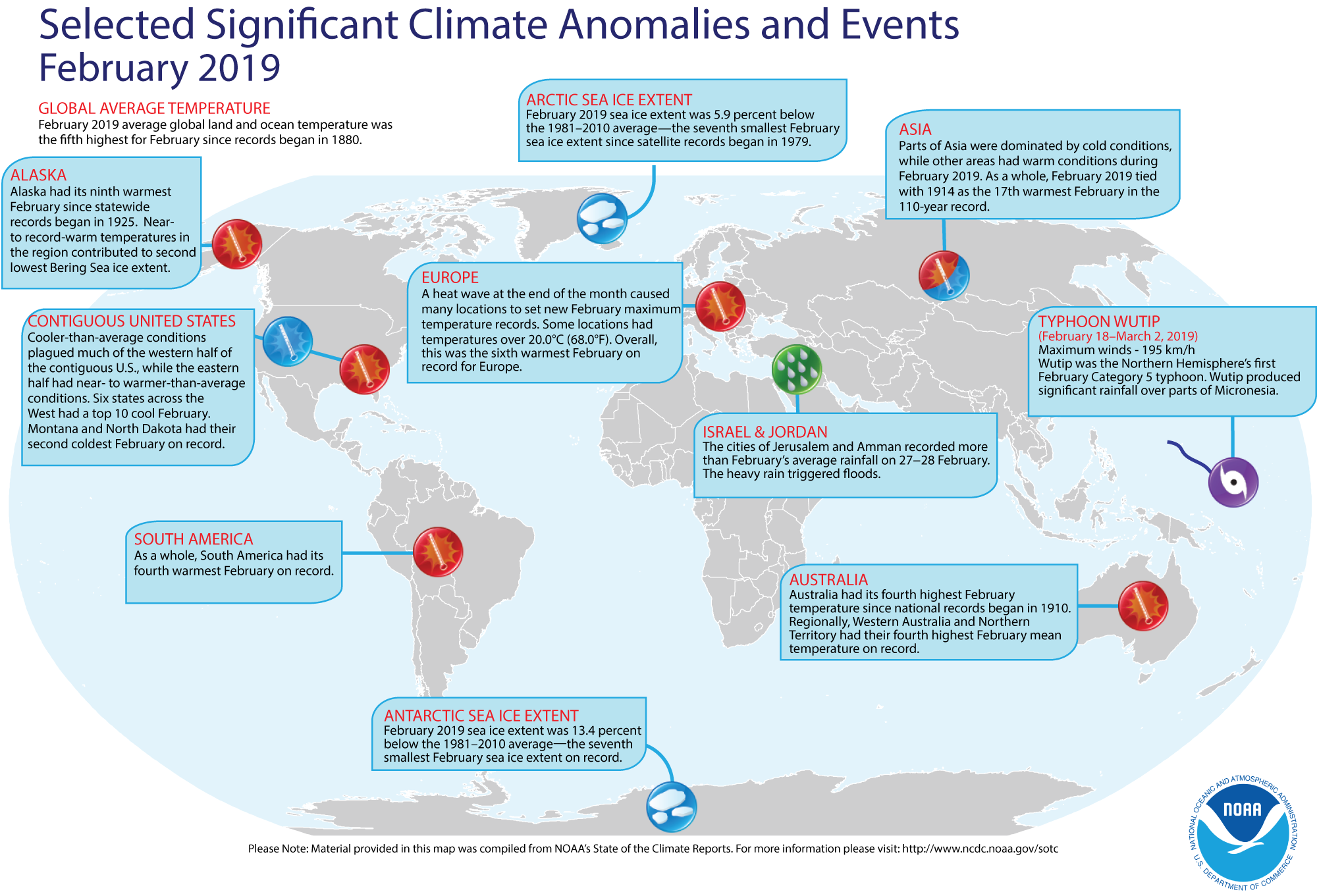We recently concluded the second full month of 2019, and already the year to date has turned out on the warm side.

A collage of typical climate and weather-related events: heatwaves, drought, hurricanes, wildfires and changes in sea ice coverage. (Image credit: NOAA)
Steady warmth around the globe made February the fifth hottest on record. Seasonally, the period from December 2018 through February 2019 ranked fourth hottest on record, according to scientists at NOAA’s National Centers for Environmental Information.
Here are more highlights from NOAA’s latest monthly global climate report:
Climate by the numbers
February 2019
The average global temperature in February was 1.42 degrees F above the 20th-century average of 53.9 degrees, making it the fifth-hottest of any February in the 140-year record (1880-2019). Last month was also the 43rd consecutive February and the 410 consecutive month with global temperatures above average.
The year to date I January through February
The period from January through February of this year saw a global temperature that was 1.51 degrees F above the average of 53.8 degrees. This was the fourth highest YTD on record. Much of Australia, parts of northeastern Brazil, the Southern Ocean, East China and the Barents Seas and southeastern Pacific Ocean had a record hot YTD.
Season | December through February
The seasonal temperature for the period from December 2018 through February 2019 was 1.51 degrees F above the average of 53.8 degrees, which is the fourth highest for that period.

Other noteworthy global climate facts and stats
-
Polar sea-ice coverage remains smaller than average: Average Arctic sea ice coverage (extent) in February was 5.9 percent below the 1981–2010 average, the seventh smallest for February on record. While sea ice extent shrunk in the Bering Sea, sea ice expanded in the Barents Sea and Sea of Okhotsk. The Antarctic sea ice extent was 13.4 percent below average, the seventh smallest for February on record.
-
Balmy sea-surface temperatures: The average February sea-surface temperature was 1.26 degrees F above the average of 60.6 degrees – the second highest global ocean temperature for February on record.
More > Access this and other NOAA monthly climate reports, as well as download related maps and images.
Media contact
John Leslie, 301-713-0214



